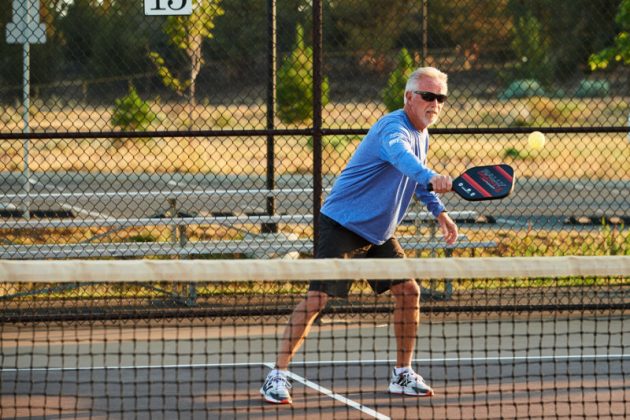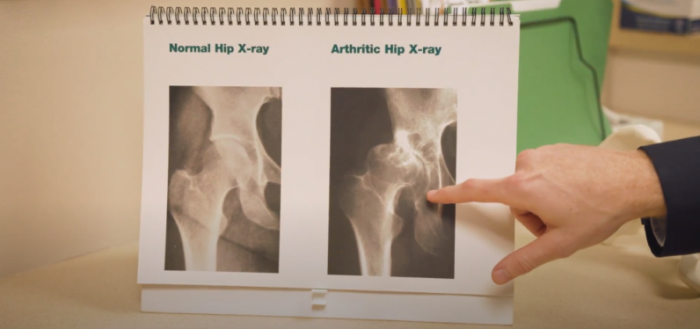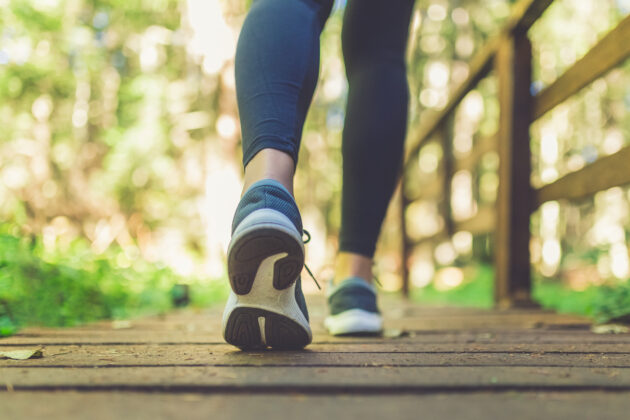
Arthritis is our nation’s number one cause of disability. According to the Arthritis Foundation, arthritis affects about 1 in 4 adults. It is estimated that by 2040, more than 78 million Americans will be doctor-diagnosed with some type of arthritis. Facts like this make things seem a little scary, but we have good news!
Regular physical activity is a key strategy to relieve pain and maintain function for people with arthritis. Many folks suffering from arthritis find themselves less physically active due to extreme arthritis pain or immobility, but exercise truly can help the problem. In fact, exercise is considered the single most effective non-drug treatment for reducing joint pain and improving movement in patients with osteoarthritis. Exercise improves energy and strengthens muscles, which helps to better support our joints.
Everyone’s arthritis symptoms are different, so it is important to start with a conversation with your orthopedic surgeon. They will be able to recommend how often you should be exercising, and which physical activities will be best for you and your needs. In general, it is best to stay as physically active as your health will allow.
HERE ARE A FEW TIPS TO EXERCISE SAFELY WITH ARTHRITIS:
- Start slow. When you are just starting or increasing physical activity, start slow and easy and see how your body tolerates it. If you feel pain, lighten the exercise or take a break. Slow things down if you notice swelling or redness in your joints. Slowly increase your exercise length and intensity as you progress.
- Move gently. Choose activities that are easy on the joints such as walking, biking, swimming, or even stretching. It may be a good idea to start with gentle range-of-motion exercises before moving on to strengthening or aerobic exercise. Keep impact low to keep the stress on your joints low.
- Modify as needed. If your arthritis symptoms flare-up, try to modify your activity to stay as active as possible. Be sure to ask your medical provider when/if you should take a break due to flares.
- Heat and ice. Applying a warm towel or hot pack before exercise for about 20 minutes can relax joints and relieve pain. Icing your joints for up to 20 minutes, as needed, after activity can help to reduce swelling. For more information on the RICE Treatment, take a look at our how-to guide.
- Don’t overdo it. The bottom line is to do what feels best for your body, and your arthritis. Talk with your medical provider about what joint pain is normal, and what pain is a sign of a bigger issue.
When it comes to exercising with arthritis, you don’t have to run a marathon or swim 50 laps to help reduce your symptoms. Moderate physical activity can help control your arthritis symptoms, and also help you to maintain a healthy weight.
How to incorporate physical activity into your daily routine
- An eager dog can be the perfect motivation to stay active. Walking is a fantastic low-impact, weight-bearing exercise that will keep your joints flexible and muscles strong. Your furry friend will keep you company and keep you healthy!
- Give yoga or tai chi a try. These activities are great for body awareness, improving balance, flexibility, strength, and promoting relaxation. Be sure to tell your instructor about your condition so they can help modify positions and movements that cause pain.
- Are any of your daily destinations close enough to reach safely by bike? Biking is a great exercise that is easy on your joints, and you’ll also save on gas! Next time you’re heading to the library, park, or post office, consider riding your bike.
- Most of us dread household chores, but they can be a great way to get moderate exercise without having to go to the gym! Clean the floors, dust the house, tend the garden, or rake some leaves to get your heart rate up and your joints moving. Alternate motions and the hands you use to avoid overuse or hand pain.
- Get in the pool! Water exercises are extremely easy on the joints and a great choice for those with arthritis pain. Even walking from one side of the pool to the other at a brisk pace is a helpful activity. If you’re new to water exercises, taking a class can help with form and technique.
Incorporating regular physical activity into your routine can be challenging, especially if you are dealing with joint pain and stiffness. Take the first step and make an appointment with your orthopedic surgeon today to help create an exercise plan that’s right for you.





